Top 14 Exercises to Relieve Knee & Joint Pain

The largest and among the most vulnerable joints in our body is the knee. People of every age across the globe experience knee pain. It bears significant stress from daily activities, including kneeling, lifting, running, jogging, and walking.
While some think avoiding exercise in such conditions is tempting, this is not always an ideal solution. Certain exercises to relieve knee pain have been proven to help alleviate the condition and prevent you from experiencing the same.

Table of Contents

What is Knee Pain?
Knee pain is a common discomfort or soreness in the knee joint, resulting from various causes such as injuries, arthritis, overuse, or underlying medical conditions. It may manifest as sharp or dull aches, swelling, stiffness, or difficulty in movement.
Treatments for knee pain depend on its cause and can range from rest and physical therapy to medications or surgery. Managing knee pain often involves a combination of lifestyle changes, exercises, and medical interventions to alleviate symptoms and improve joint function.
Causes of Knee Pain
Knee pain can arise from numerous causes, including injuries, medical conditions, and overuse. There are several reasons responsible for knee pain, including:
Mechanical Issues
A few mechanical problems causing knee pain are as follows:
Dislocated kneecap
Pain in the hip or foot
Degeneration of bone or cartilage
Iliotibial band syndrome
Injuries
A knee injury adversely impacts the ligaments, tendons, cartilage, and bones that form the joint. Here are a few common knee injuries triggering knee pain:
Fractures
ACL (anterior cruciate ligament) injuries
Patellar tendinitis
Torn meniscus
Knee bursitis
Arthritis
The following variants of arthritis are most likely to affect the knee.
Gout
Septic arthritis
Pseudogout
Rheumatoid arthritis
Apart from these, athletes and young adults are prone to Patellofemoral pain syndrome, which occurs between the thighbone and kneecap. In such a condition, the kneecap fails to track in its groove accurately. This condition is also common among older adults due to arthritis in the kneecap.
Symptoms of Knee Pain
In addition, the symptoms of the pain behind your knees depend on the cause. For instance, a tender calf triggers severe conditions like deep vein thrombosis, which require urgent medical attention.
Moreover, individuals suffering from osteoarthritis undergo discomfort when bearing weight. In such conditions, the knee becomes stiff if sitting longer or moving out of bed in the morning.
Besides, individuals with PCL (posterior cruciate ligament) injuries feel pain behind the knees, especially when kneeling, walking, or running. Regardless, a few of the symptoms of knee pain include:
Stiffness and swelling
Crunching and popping noises
Instability or weakness
Warmth or redness to touch
Inability to straighten your knee
Individuals can include a few exercises to relieve knee pain under professional guidance to do away with these conditions.
14 Best Exercises for Knee Pain
Exercise can play a crucial role in managing and alleviating knee pain. Some of the best exercises include:
1. Standing Hamstring Curls
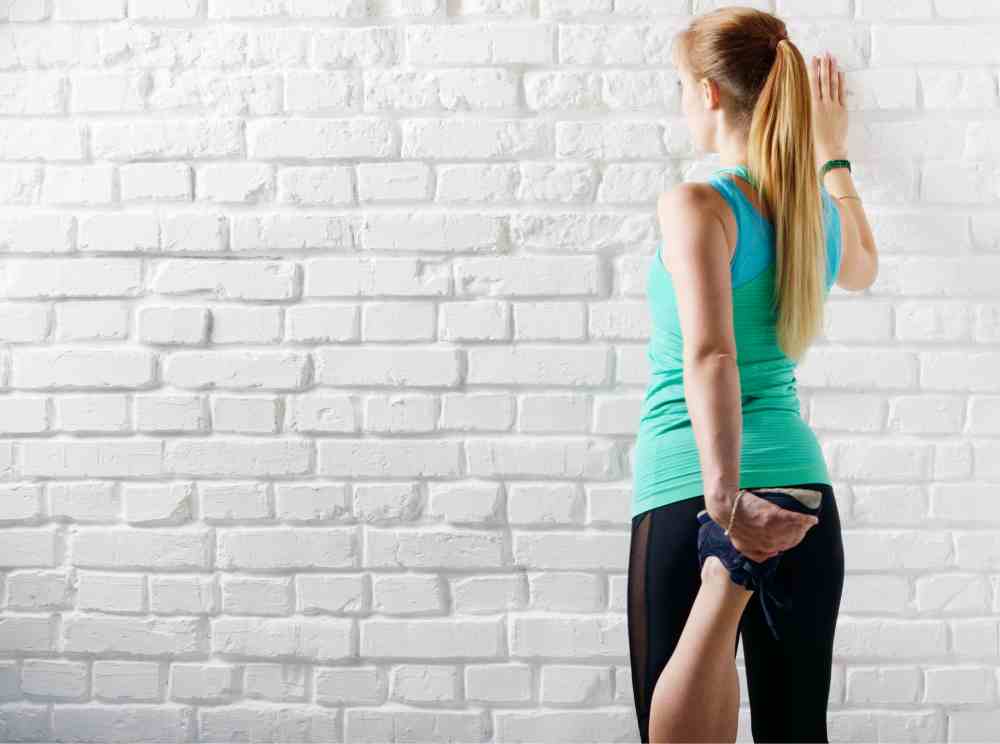
This exercise involves hamstrings and gluteal muscles and improves the capacity to withstand the impact of exercise and stabilise your knees. This further helps stretch your quadriceps to relieve back pain and stiffness.
How to Perform Standing Hamstring Curls?
Step 1: Stand straight with your knees 1 to 2 inches apart. Hold on to a stable object like a table or chair for beginners to maintain balance.
Step 2: Slowly lift your heel off the floor, bending one knee behind your body. Keep your thighs aligned as you lift.
Step 3: Continue lifting your heel until your leg forms a 90-degree angle.
Step 4: Hold this position for 5 seconds.
Step 5: Gently lower your leg back to the floor.
Step 6: Repeat the movement 2 more times on the same leg, then switch sides and repeat the entire procedure on the other leg.
2. Half Squat
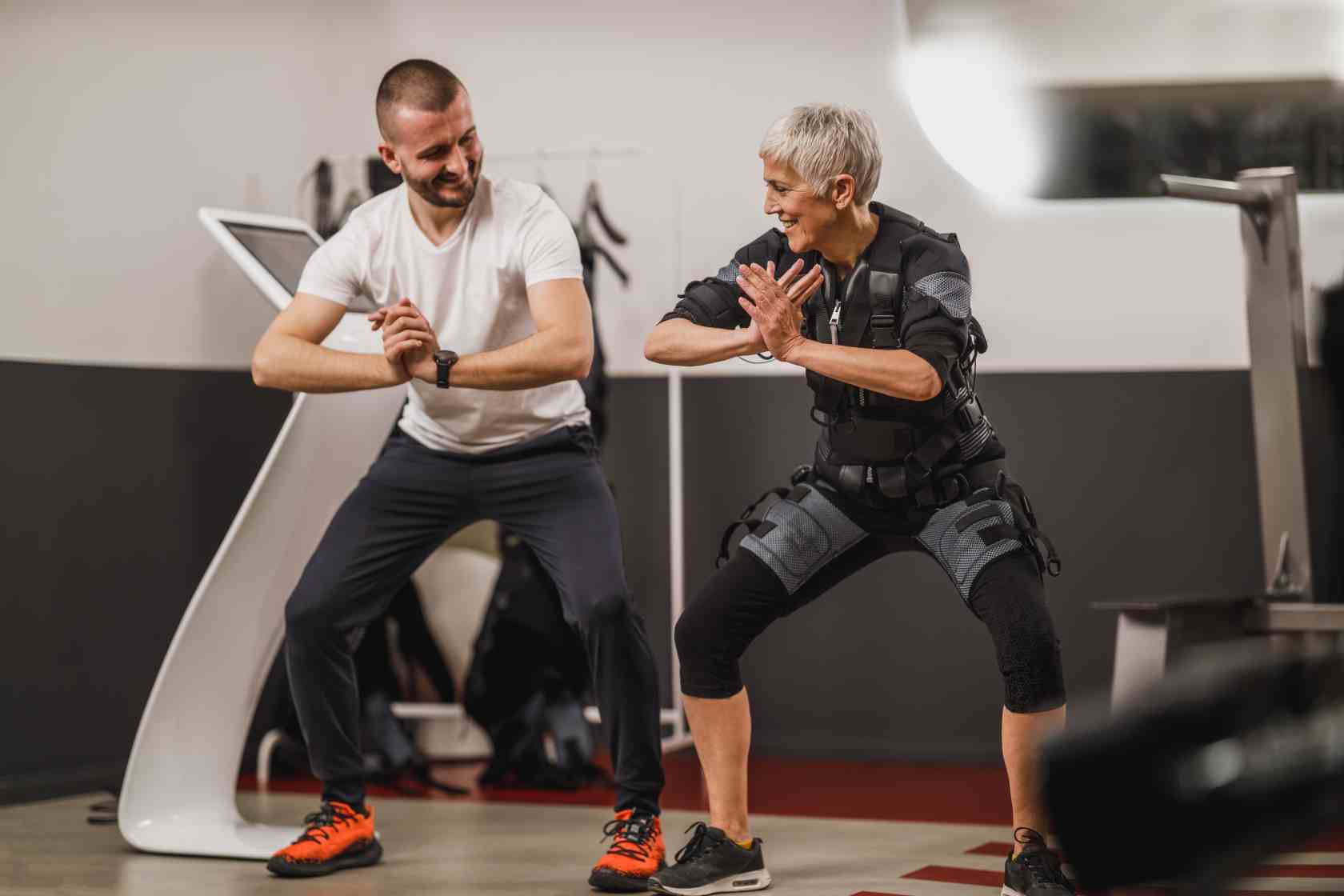
Half squatting is among the best exercises for knee pain. It improves knee stability, making it less susceptible to sports injury risks. It also enhances motion range and pushes past strength plateaus.
How to Perform Half Squat?
Step 1: Take a standing squat position with your feet shoulder-width apart.
Step 2: Extend your hands out in front of you for balance and look straight ahead.
Step 3: Slowly squat down approximately 10 inches, or halfway to a full squat.
Step 4: Hold this position for a few seconds.
Step 5: Stand up by pushing through your heels.
Step 6: Repeat for 2 to 3 sets of 10 repetitions.
3. Leg Lifts

Leg lifting exercises primarily target the lower abdominal muscles and help control the core muscles. It involves the quadriceps and abdominal muscles.
How to Perform Leg Lifts?
Step 1: Lay a yoga or exercise mat on the floor and lie down on it.
Step 2: Keep your right leg straight and bend your left leg slightly at the knee, bringing the foot closer to your body.
Step 3: Pull your abdominal muscles inward and press your lower back against the floor. Place your hand under your lower back to ensure no space between your back and the floor.
Step 4: Gently lift your right leg without bending your knee, keeping your toes pointed towards the ceiling. Hold the pose when your leg is nearly 12 inches off the floor or not higher than the bent knee on your left leg.
Step 5: Hold this position for 5 seconds.
Step 6: Slowly lower your leg back to the floor. Repeat the process 2 more times with the same leg, then switch to the other leg and repeat.
4. Wall Squats
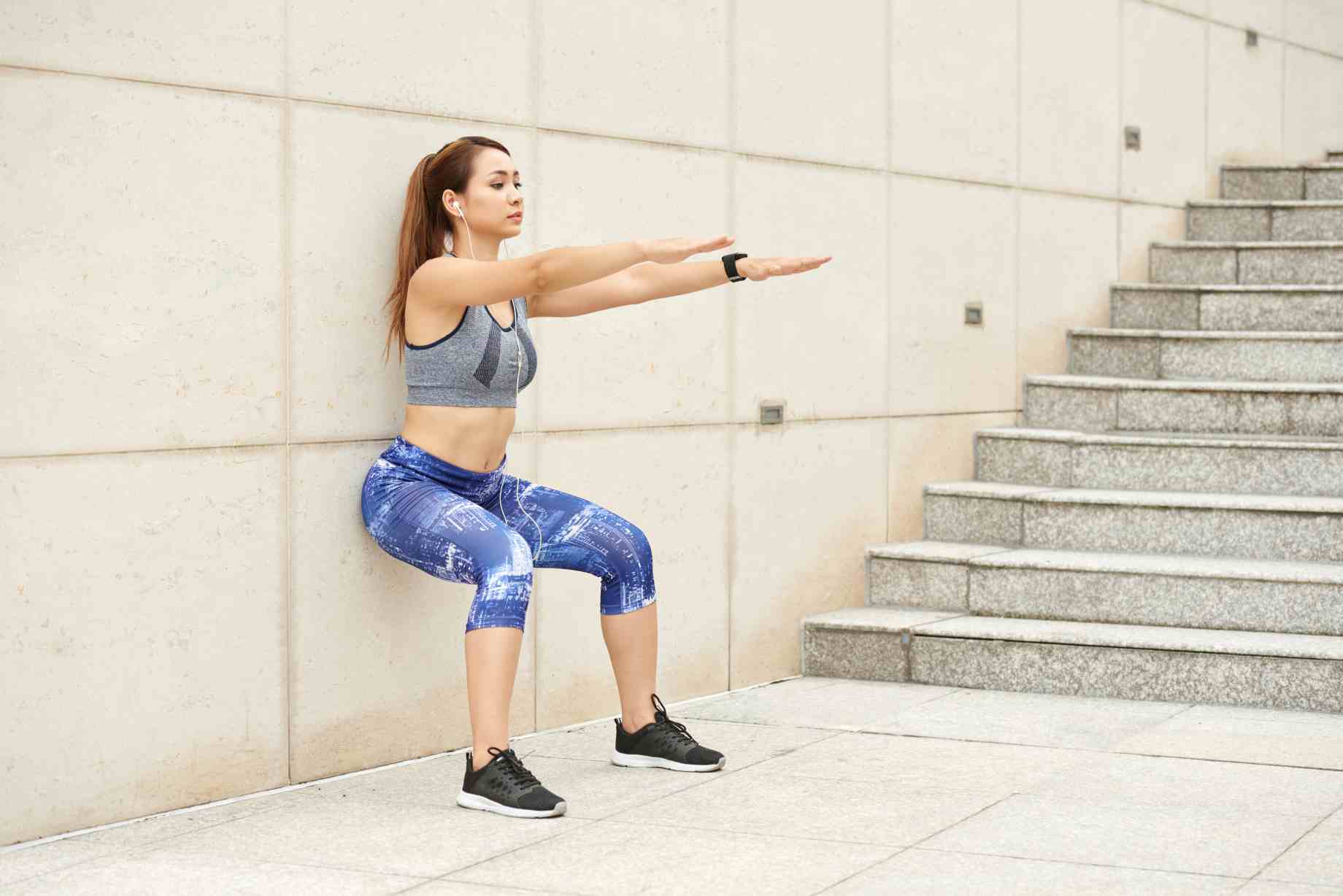
The wall squat is essential for muscle endurance and is one of the best exercises for relieving knee pain. It primarily targets quads, glutes, and hamstrings. If performed appropriately, wall squats help optimise the knees and strengthen the connective tissue.
How to Perform Wall Squats?
Step 1: Stand with your head, back, shoulders, and hips flat against the wall.
Step 2: Place your feet about 24 inches or hip-width apart, ensuring your back and shoulders remain in contact with the wall.
Step 3: Slowly slide your back down the wall until you reach a half-sitting posture.
Step 4: Hold this position for 5 seconds.
Step 5: Slowly slide back up to the starting position.
Step 6: Repeat the exercise for the desired number of repetitions.
5. Calf Raises

Our calf muscle is intricately connected with the hamstring muscles and the back of our knees. Therefore, strengthening the calf muscle will provide greater stability and support to the knees.
How to Perform Calf Raises?
Step 1: Stand facing a wall or sturdy support, with feet hip-width apart and hands lightly resting on the support for balance.
Step 2: Slowly raise your heels off the ground as high as possible, lifting your body weight onto the balls of your feet.
Step 3: Hold the raised position momentarily, focusing on contracting your calf muscles to maximise the workout.
Step 4: Slowly lower your heels to the ground, returning to the starting position. Keep the movement controlled and deliberate to engage your calf muscles effectively.
Step 5: Repeat the movement for 10 to 15 repetitions, ensuring a full range of motion with each repetition. Maintain proper form and control throughout the exercise.
Step 6: Perform the exercise at a pace that allows you to maintain proper form and control. Focus on the contraction and stretch of your calf muscles with each repetition to maximise the benefits of the exercise.
6. Side Leg Raises (One Leg)
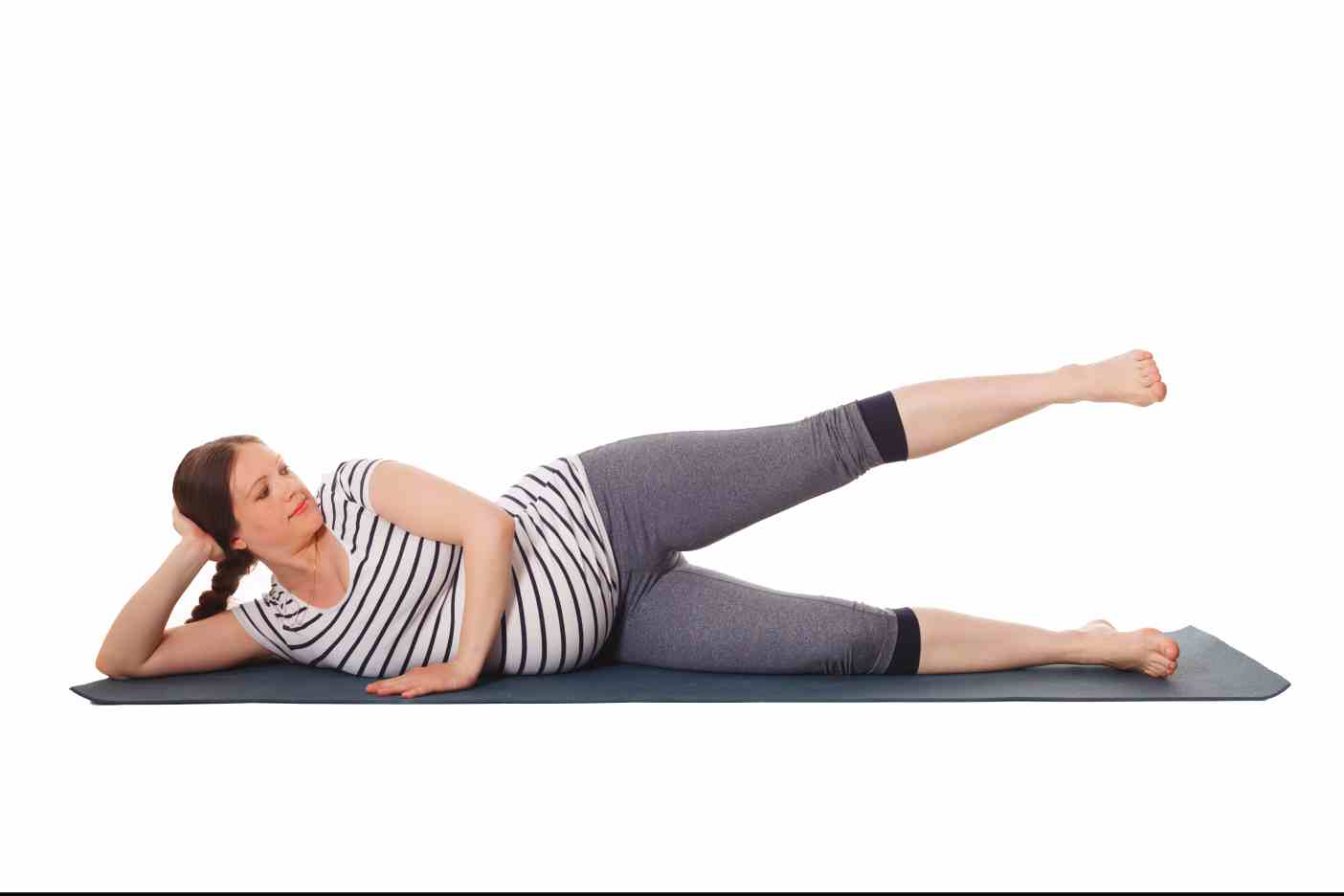
This exercise does not directly reduce knee pain but ensures better body balance. Furthermore, with regular practice, side leg raises will significantly strengthen your knees and hips.
How to Perform Side Leg Raises?
Step 1: Lie on one side, ensuring your body is straight. You can place your bottom arm under your head for support and comfort.
Step 2: For support, bend your bottom leg at the knee and keep it on the ground. Straighten your top leg and raise it to about a 45-degree angle from the rest of your body. Keep your toes pointed forward throughout the movement.
Step 3: Hold this raised position for 5 seconds, engaging your outer thigh and hip muscles.
Step 4: Slowly lower your top leg to meet the bottom leg, returning to the starting position.
Step 5: Relax briefly, then repeat the movement for 10 to 15 repetitions on the same side.
Step 6: After completing the desired number of repetitions on one side, switch to the other and repeat the exercise to work both legs equally.
7. Straight Leg Raises
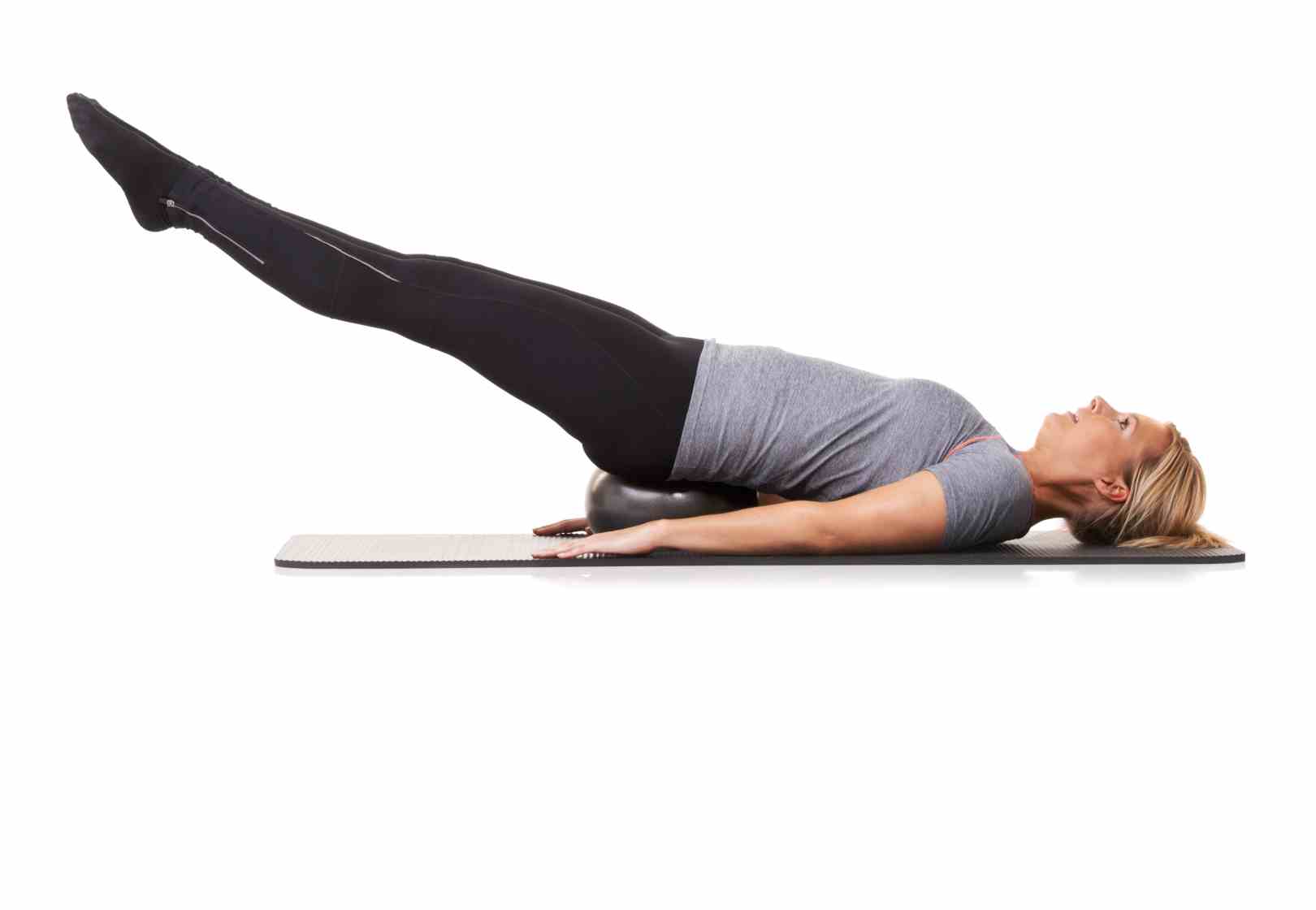
Straight leg raise exercise is primarily responsible for quadriceps and hip flexor musculature. Thus, it is among the best knee exercises medical practitioners recommend during knee rehabilitation to support your knee and reduce stress on your knee joint.
How to Perform Straight Leg Raises?
Step 1: Lie on your stomach on a comfortable surface, such as a yoga mat, with your legs straight and toes pointing away from you.
Step 2: Tighten the muscles in your hamstrings (back of the thigh) and glutes (bottom muscles) to stabilise your pelvis and lower back.
Step 3: Keeping your legs straight, slowly lift them off the ground towards the ceiling. Focus on using your hip muscles to lift your legs rather than momentum.
Step 4: Hold the raised position for 3 to 5 seconds, engaging your core to maintain stability.
Step 5: Slowly lower your legs back down to the starting position with control, keeping them straight throughout the movement.
Step 6: Repeat the exercise for 10 to 15 repetitions, maintaining proper form and control.
Step 7: After completing the desired repetitions, switch legs and repeat the exercise on the other side.
8. Steps-Up
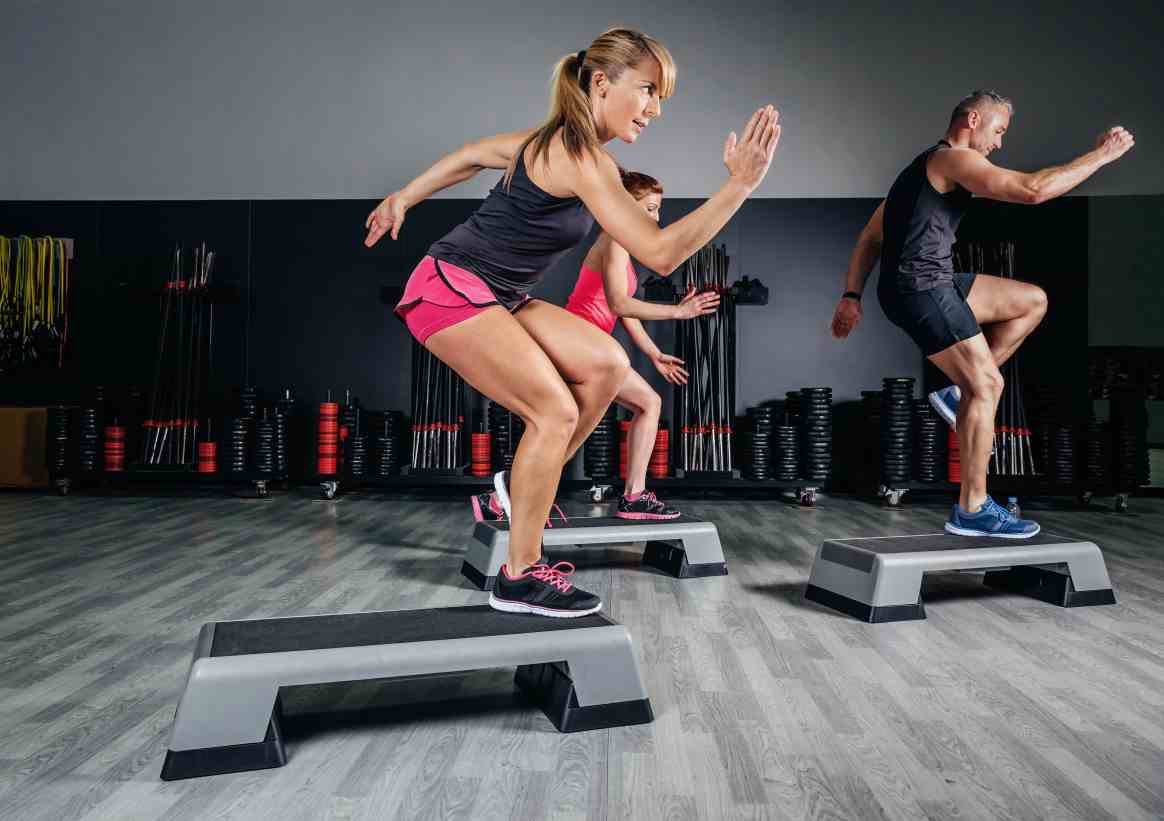
If you are looking for exercises for knee joint pain, add step-ups to your daily workout routine. It involves hamstrings, glutes, quadriceps and hip flexors and targets the lower body to recruit your core muscles and improve muscle endurance.
How to Perform Steps-Up?
Step 1: Stand facing a stable platform or step above 6 inches, ensuring it can support your weight.
Step 2: Step onto the platform with your right foot, placing it entirely on the surface.
Step 3: Bring your left foot behind you, allowing it to hang off the back of the platform.
Step 4: Shift your weight onto your right foot, engaging your muscles for stability, and hold this position for about 5 seconds.
Step 5: Slowly lower your left foot back down to the ground.
Step 6: Repeat the movement on the other side, stepping up with your left foot and allowing your right foot to hang behind the platform. Hold for 5 seconds before lowering your right foot back down.
9. Short-arc Knee Extension
Another exercise to relieve knee pain and strengthen thigh muscles is knee extension. Moreover, it will make your knee less prone to injuries and rehabilitate the same.
How to Perform Short-arc Knee Extension?
Step 1: Sit on a stable platform, such as a chair or bench, with your hands hanging freely by your sides.
Step 2: Place a thin pad or towel roll under your right knee to elevate it slightly above your hip level.
Step 3: Extend your right leg by straightening your knee until you reach a full terminal knee extension. Your leg should be parallel to the ground at this point.
Step 4: Slowly lower your right leg back to the starting position, allowing your foot to hover above the ground.
Step 5: Repeat the movement for 10 to 15 repetitions, focusing on engaging your quadriceps muscles as you extend your knee.
Step 6: Switch legs and repeat the exercise with your left leg, using the same technique and number of repetitions.
10. Bridges

Bridges are versatile and effective exercises that target the muscles in your lower back, glutes, and hamstrings. They can be performed virtually anywhere, making them convenient for home workouts or gym sessions.
How to Perform Bridges?
Step 1: Lie on your back on a comfortable surface, such as a yoga mat, with your knees bent and feet flat on the floor.
Step 2: Engage your core muscles to stabilise your spine and pelvis throughout the exercise.
Step 3: Lift your hips off the ground by pressing through your heels and squeezing your glutes. Aim to create a straight line from your shoulders to your knees as you raise your hips.
Step 4: Hold this elevated position for a few seconds, focusing on squeezing your glutes to maximise muscle engagement.
Step 5: Slowly lower your hips back down to the starting position, maintaining control and stability.
Step 6: Repeat the movement for 10 to 15 repetitions, maintaining proper form and control with each repetition.
11. Quadriceps Stretch
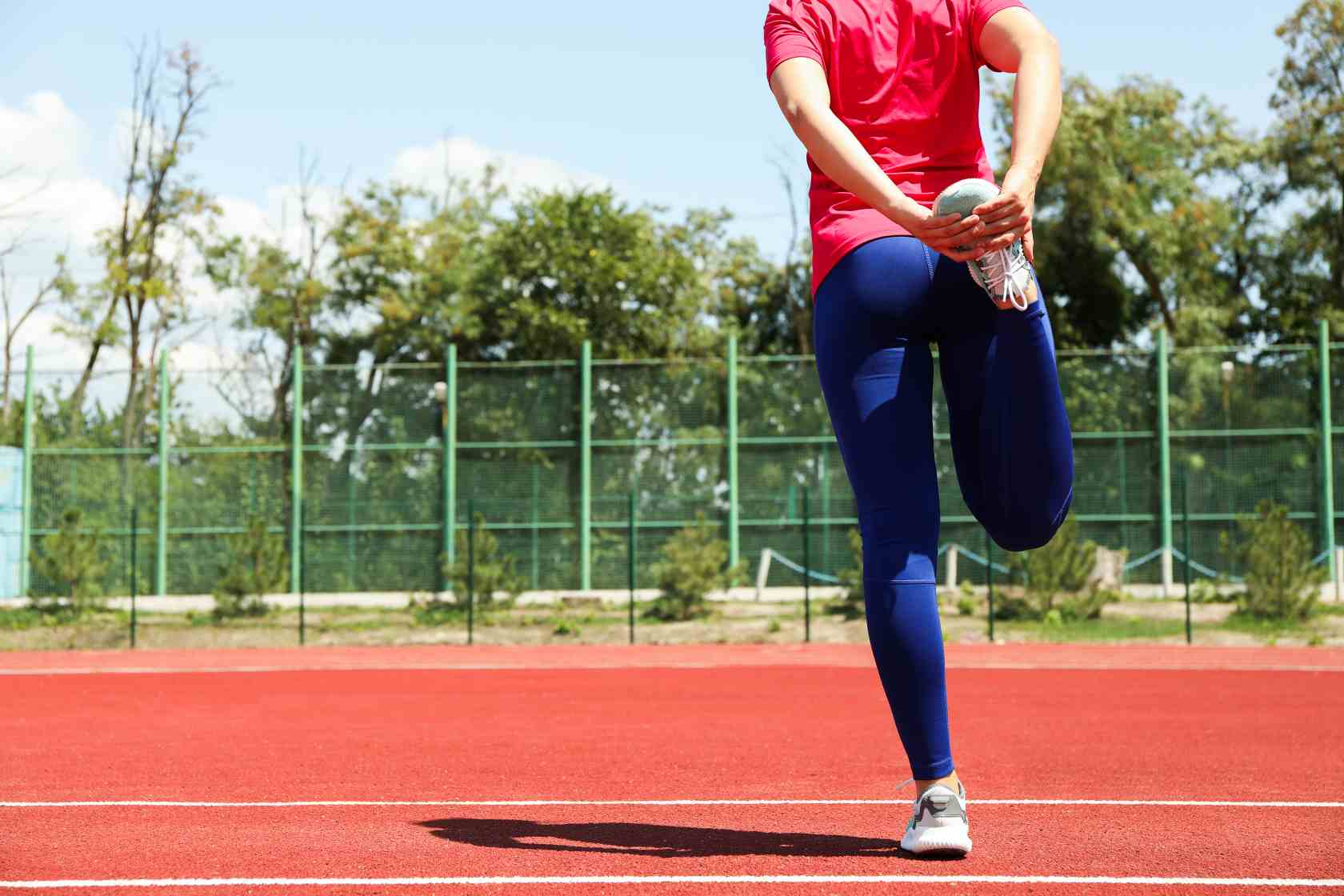
The quadriceps stretch targets the muscles on the front of your thigh and is often used to alleviate tightness and improve flexibility. This simple yet effective stretch can help alleviate knee pain and enhance overall lower-body mobility.
How to Perform Quadriceps Strech?
Step 1: Stand up straight with your feet hip-width apart, ensuring good posture with your shoulders back and chest lifted.
Step 2: Bend one knee, bringing your foot towards your buttocks. If needed, you can use your hand on the same side to assist in bringing the foot closer.
Step 3: Reach back and grab your ankle with the hand on the same side, gently pulling your foot closer to your buttocks. Keep your knees close together throughout the stretch.
Step 4: Hold the stretch for 15 to 30 seconds, feeling a gentle stretch along the front of your thigh and into your quadriceps muscle.
Step 5: Release the stretch and switch legs, repeating the same steps on the opposite side.
Step 6: Repeat the stretch 2 to 3 times for each leg, aiming to increase the stretch's intensity with each repetition gradually.
12. Swimming

Swimming is a low-impact exercise that helps strengthen the muscles around the knee joint while providing cardiovascular benefits. Aim for 20-30 minutes of swimming at least 2-3 times weekly.
How to Perform Swimming?
Step 1: Start with easy movements such as walking or gentle kicking to warm up your muscles and increase blood flow to the knee joints.
Step 2: Choose gentle knee strokes, such as backstroke or breaststroke. Focus on maintaining proper form and avoiding excessive kicking or twisting movements that may exacerbate knee pain.
Step 3: Swim comfortably, focusing on smooth and controlled movements. Avoid overexertion and listen to your body.
Step 4: Finish your swim session with a few minutes of easy swimming or floating to allow your muscles to relax and your heart rate to return to normal.
13. Stationary Bike Riding
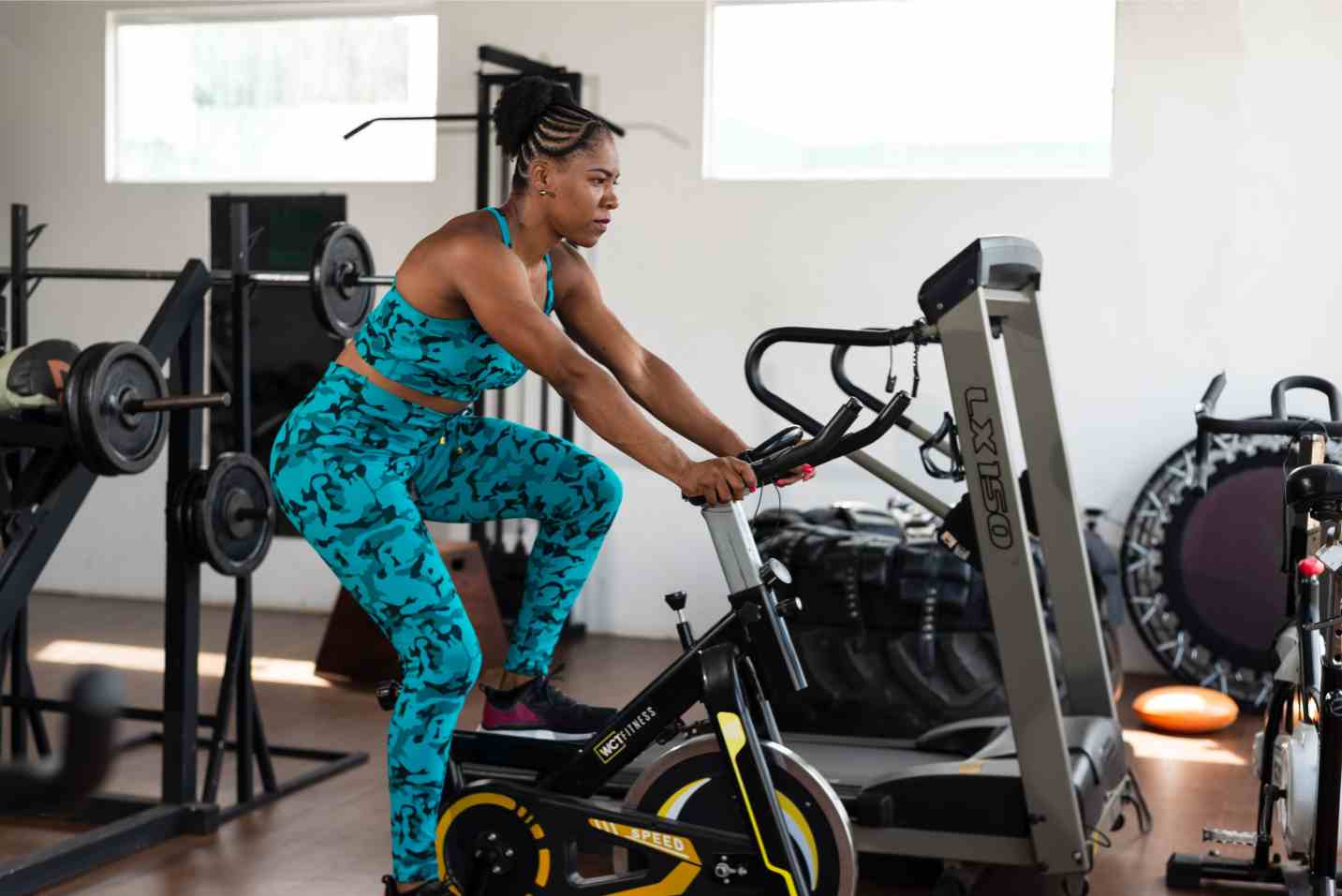
A stationary bike riding exercise will provide cardio to the body, especially the knees.
Riding an exercise bike is An inexpensive exercise that can promote heart health, burn calories, and tone and develop muscles.
How to Perform Stationary Bike Riding?
Step 1: Sit on the stationary bike with the seat adjusted to a comfortable height, allowing for a slight knee bend when your feet are on the pedals.
Step 2: Start pedalling at a low resistance level for 5 to 10 minutes to warm up your muscles and gradually increase your heart rate.
Step 3: Maintain a steady pace as you pedal, focusing on proper form with your back straight and hands lightly gripping the handlebars.
Step 4: After the warm-up, gradually increase the resistance level to a moderate intensity that challenges you but allows you to maintain your pace.
Step 5: Continue pedalling at a moderate pace for 20 to 30 minutes, adjusting the resistance as needed to keep the workout challenging.
Step 6: After a complete workout, cool down by reducing the resistance to a low level and pedalling slowly for 5 to 10 minutes.
14. Clamshells
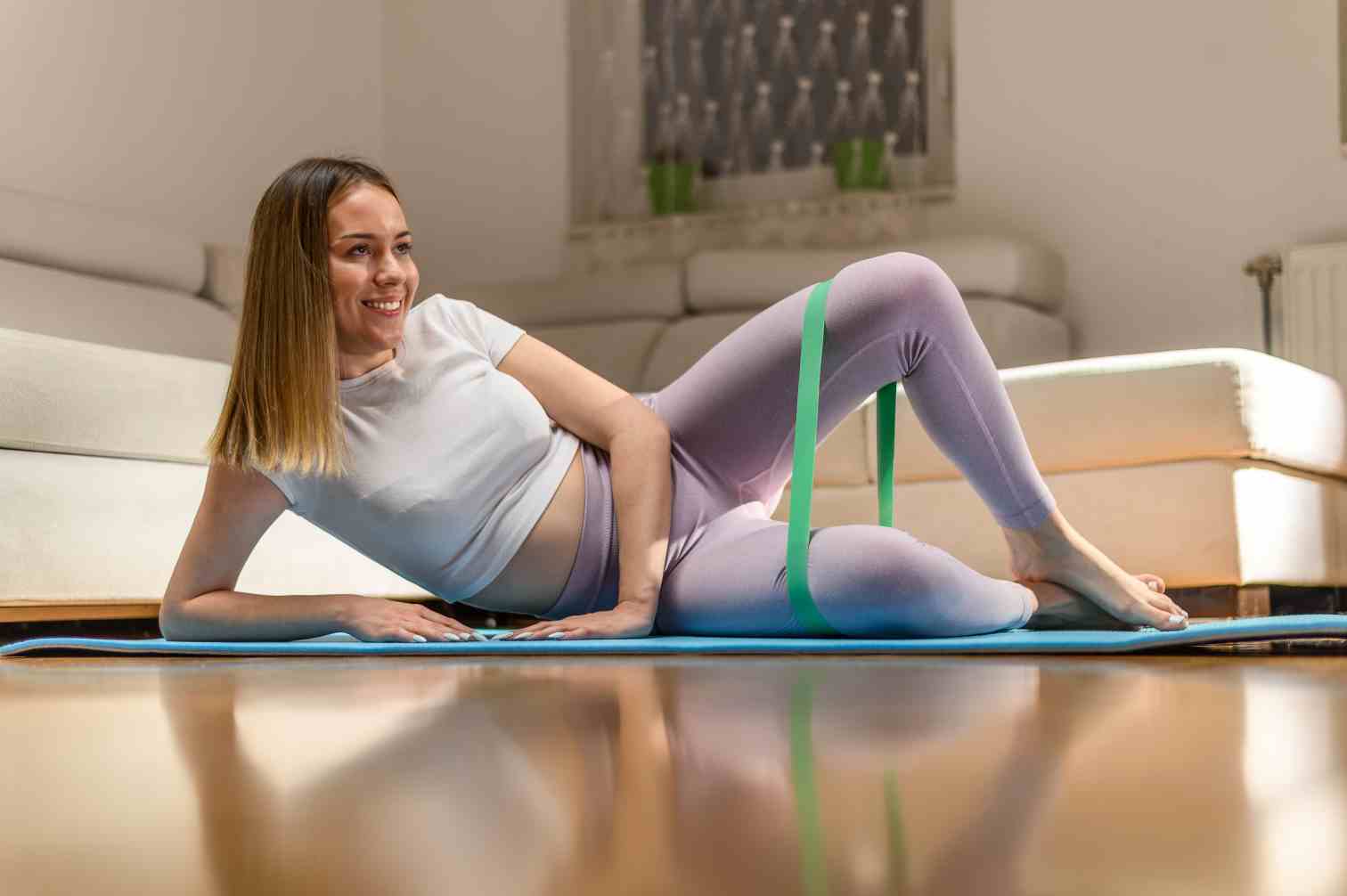
The gluteus medius, a muscle outside the buttocks that stabilises your pelvis, can be strengthened particularly with the clamshell exercise. Exercises like the clamshell can help you balance the amount of muscle used in your pelvic floor, outside and inner thighs.
How to Perform Clamshells?
Step 1: Lie on your side with your hips and knees bent, forming a 90-degree angle, and your head supported by your bottom arm. Keep your hand resting on the floor for balance.
Step 2: Keep your feet together and your core engaged throughout the exercise to maintain stability.
Step 3: Without rotating your hips backwards, slowly lift your top knee upward as far as possible while keeping your feet together. Focus on using the muscles on the side of your hip to perform the movement.
Step 4: Hold the lifted position for a few seconds, ensuring you feel a contraction in your glutes and outer thigh muscles.
Step 5: Slowly lower your top knee to meet the bottom knee, maintaining control and stability throughout the movement.
Step 6: Repeat the exercise for 10 to 15 repetitions on each side, focusing on smooth and controlled movements.
Types of Equipment Required for Knee Pain Workouts
Many knee pain exercises can be done with little to no equipment, but having access to some basic items can enhance your workout experience and effectiveness. Here's what you might find useful:
Exercises |
Equipment |
| Floor exercises | Exercise Mat |
| Leg lifts and clamshells | Resistance Bands |
| Bridges and hamstring curls | Stability Ball |
| Step-ups and seated leg lifts | Chair or Step |
| Cycling | Stationary Bike |
| Swimming | Swimming Pool |
| Running | Cushioned Shoes |
Benefits of Knee Pain Exercise
Strengthening and stretching exercises offer a holistic approach to managing knee pain. They promote muscle flexibility and strength for enhanced joint stability and reduced discomfort.
- Muscle Flexibility: Regular exercise promotes flexibility in the muscles surrounding the knee joint, reducing stiffness and enhancing range of motion.
- Strength Improvement: Strengthening exercises target the muscles around the knee, providing better support and stability to the joint, thereby reducing strain and discomfort.
- Reduced Risk of Injuries: Stronger muscles and improved flexibility help prevent injuries by better absorbing impact and stress during physical activities.
- Improved Joint Health: Exercise promotes circulation and nutrient delivery to the knee joint, fostering better joint health and potentially slowing down degenerative processes.
- Pain Relief: Gentle stretching and strengthening exercises can alleviate knee pain by reducing pressure on the joint and enhancing overall function.
- Enhanced Mobility: Exercise improves muscle strength and flexibility, facilitating easier movement and allowing individuals to perform daily activities with greater ease and comfort.
Exercises to Avoid for Knee Pain
While exercises are effective in treating knee pain, to work out safely under such conditions, individuals should avoid high-impact and jarring exercises, including:
Lunges
Hurdler's stretches
Jumping
Deep Squats
Full-arc knee extensions
Kickboxing, etc.
They tend to worsen the condition and exert excessive pressure on the knees, making them susceptible to injuries and other associated risks.
Precautions Should Be Taken While Exercising With Knee Pain
While exercising is an effective way to deal with knee pain, one must be aware of the precautions to avoid worsening the condition. They are as follows:
- Avoid Resting for a Longer Time: Excessive resting potentially weakens muscles, eventually intensifying joint pain. Under expert guidance, individuals can include the exercises mentioned above and stick to them for prompt results.
- Skip Running: Irrespective of what surface you run on, roads or treadmill, it imparts immense stress on the knees and all other joints.
- Use Cushioned Shoes: Shoes with cushioned insoles are comfortable to wear and are often recommended by doctors. They uniformly distribute the pressure without straining your knees. You can also opt for special insoles as instructed by a professional. Besides, cardiovascular exercises such as walking, swimming, stationary cycling, etc., are beneficial for muscle strengthening, which in turn will contribute to relieving knee pain.
Disclaimer: Practice the exercises mentioned above under the supervision of a trained practitioner and consult a doctor beforehand to ensure your body is fit enough to perform the required moves/postures.
Incorporating targeted exercises into your routine can significantly relieve knee pain and expedite recovery. Strengthening the muscles surrounding the knee, such as the quadriceps, hamstrings, and calves, enhances joint stability and reduces strain.
Low-impact cardio activities, like swimming and cycling, maintain overall fitness without exacerbating knee issues. Additionally, regular stretching can improve flexibility and alleviate stiffness.













